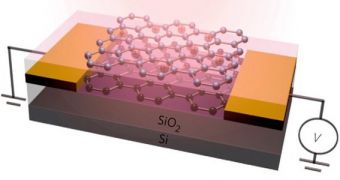A group of investigators at the University of Michigan is currently working on developing and refining a new method of constructing contact lenses. Their new optical devices could allow wearers to see well into the infrared portion of the electromagnetic spectrum, something that the human eye is not naturally capable of doing. The wonder material that can theoretically make this possible is called graphene.
This 2d, pure carbon compound features some interesting photoconductivity mechanisms that have been amply researched by scientists at IBM last year. Inspired by that work, the UM team decided to check and see whether or not the material could be used for infrared vision without the need for bulky, head-mounted equipment, IEEE Spectrum reports.
While graphene is very sensitive to both infrared and ultraviolet wavelengths, its extreme thinness only allows it to capture around 2.3 percent of all incoming light, a level too low for generating electrical signals. The team got around this issue by amplifying an existing electrical current, passing through a second layer of graphene in the contact lenses. The two layers are separated by an insulator.
This amplification process enables the materials to produce signals strong enough for electrical impulse generation. “If we integrate it with a contact lens or other wearable electronics, it expands your vision. It provides you another way of interacting with your environment,” explains UM assistant professor and study leader Zhaohui Zhong. The work is detailed in the journal Nature Nanotechnology.

 14 DAY TRIAL //
14 DAY TRIAL //